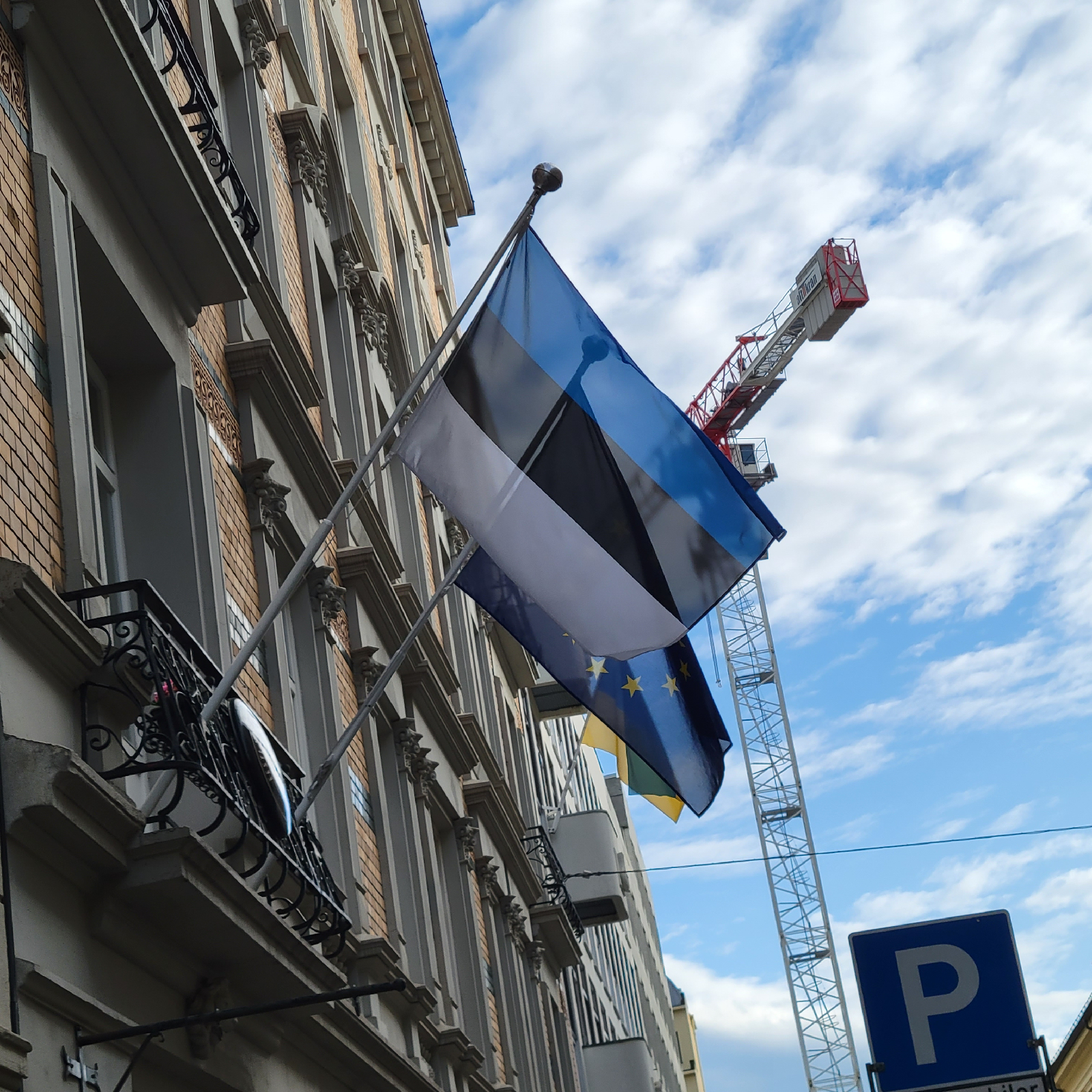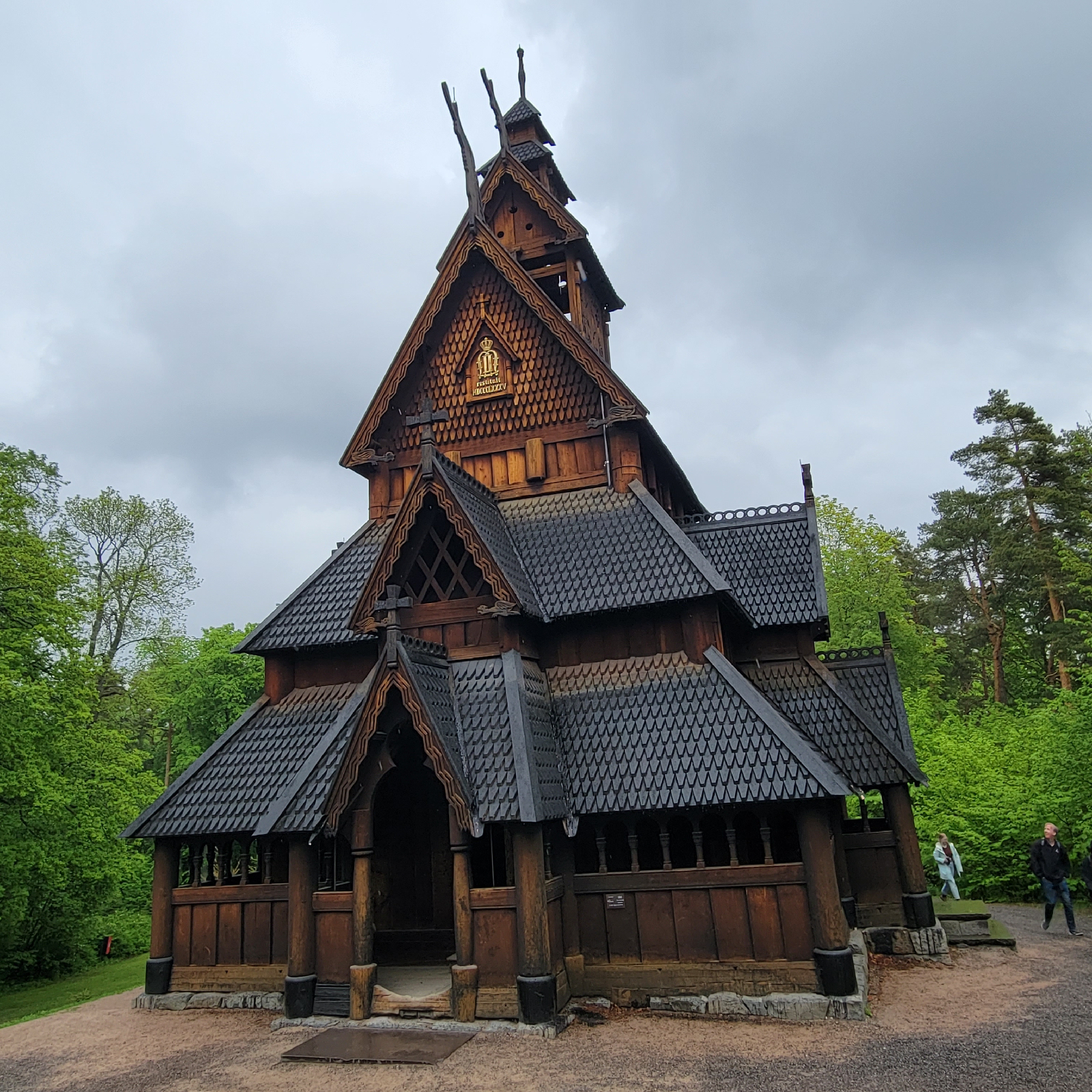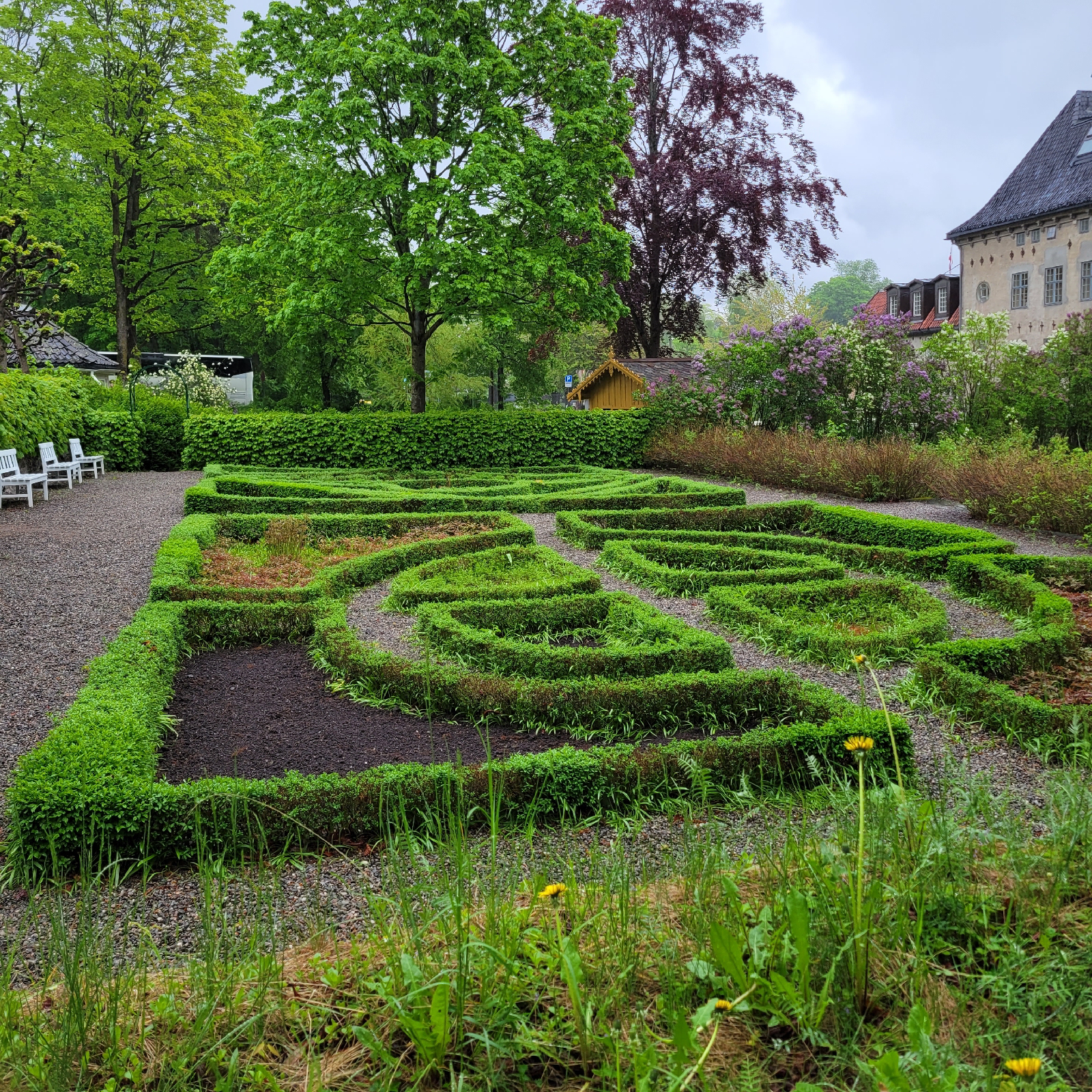The tour guide explained that houses and settlements were built in valleys and only with 1-3 families, as food was scarce. This is why he said not many large settlements were established in Norway at this time, as only 3% of the land was arable enough to cultivate food. The buildings we saw were built with one side higher, and the other lower, as natives wanted to collect the drinking water first before their animals got to it. Building in little valleys allowed waste to be easily cleaned as well with running rain water. Families lived on either side of a long house, with valuables and grain being stored in the middle, locked, so nobody could steal it. These grain buildings, said our tour guide, were built tall as to demonstrate a status symbol to passerbys.
Then we entered a house, where the tour guide explained that something special was within it: a chimney, which was imported from Italy (?) and needed to be imported because the stone strong enough required for chimneys could not be found in Norway. The example we saw had a chimney in the corner, which the guide said would more easily warm the entire house. Traditionally, he said, the leader of the group sitting at a long table would sit in the middle, (i.e. Jesus and Last Supper) but with the corner fire place, leaders now sat at the end of the table in order to stay away from the heat and to be able to see people entering and exiting the building. The corner also had two windows in it, as the person sitting there could read a Bible during the day and see it indoors, right next to the alcohol cabinet.
Then we saw a Stave Church, which was also beautiful. The guide mentioned a technique of putting the posts deep into the ground, then connecting the posts at the top to keep them stable. Then, this way you could build very high without the roof collapsing. I might need someone to redescribe this to me, but then the guide mentioned a technique on the inside of an arch that transferred the weight of the roof off of the arch and directly into the ground.
On the inside, the guide demonstrated the acoustics of the room by stepping by where the altar would be and speaking, which was much louder. He said that the walls of the church used to have vivid paintings on them describing biblical events and people, as masses then were only given in Latin. 12 stone faces made up the top of the church too, which the guide says nobody knows who they are. He then put his flashlight on the side of the wall, and revealed carvings of people and messages to others. There was a possibly secret message about kissing, which may have been from one of the men to the women, as they had to stand on separate sides. The last cool thing was he talked about how the churches were always built west, as parishioners always saw the sun walking in to indicate that God's grace enters you through the church only. Additionally, he showed us the wood carving on the outside of the door, which had Norse mythological figures on it that were cooped into the biblical stories in order to combine both paganistic and Christian identities.
Then for the rest of the museum we saw a lot of cool things, such as more houses, a wooden iron, paintings, the bank, a candy store, farm equipment, traditional dress, church regalia, church artifacts, upon other sights. One of the coolest things was as apartment, but every wing and floor was in a different historical style based on the era.
Later that day, we decided to visit the Royal Palace, which was awesome, and see all the statues and scenery in the royal garden. Guards with bayonettes and guns stood by in tall grey boxes and watched us, and we saw lots of statues in the park. Some of the statues were the ugliest things I've ever seen, until we discovered that they were designed by children. Then we saw "Mama" the spider which was horrifying.
After this, we decided to walk back from the National Theater and see the Ukrainian Embassy. The Ukrainian car had dented car doors, its glove box taped shut, and white powder wiped in the back seat. It was funny. We also saw the office for Turkish Airlines and the Estonian Embassy. There were many pretty flowers everywhere. Overall, we had a great day!
















Ashten- Wow Alex that is amazing!! I also had a great experience and enjoyed rummaging through the town and individual buildings and seeing the beautiful woodwork through the grain of the boards of the buildings. I also enjoyed the grass roof and the explanation of everything as a whole. I felt the rain added to the experience and indeed felt moved by the stories told by the tour guide.
ReplyDeleteAlex, I really appreciate that you covered the whole tour. I wish that I had remembered to mention the choir and how it was designed to project the voice of the preacher and the other choir members.
ReplyDeleteAlex, a great summary of a great day! I was a bit shocked when our guide mentioned that only 3% of Norway’s land is arable. But understandably so considering the geography and climate. Less food tends to mean fewer people, so I saw how in the past there was a lack of formal villages or cities of sorts leading to these specific living arrangements. The lesser quantity of food was evident with our discussion of farm animals and their models which were smaller and even the horse I believe they had out was smaller in size and looked smaller in size in comparison to the ones I would see back home.
ReplyDeleteI have to agree with the statue opinions, most of them were quite surreal, and aside from the geometric fox statue, everything (including mother) were unsettling. I also found the alcohol/religion cabinet quite humorous.
ReplyDeleteI forgot to include my name, it's ya boi William here
Delete